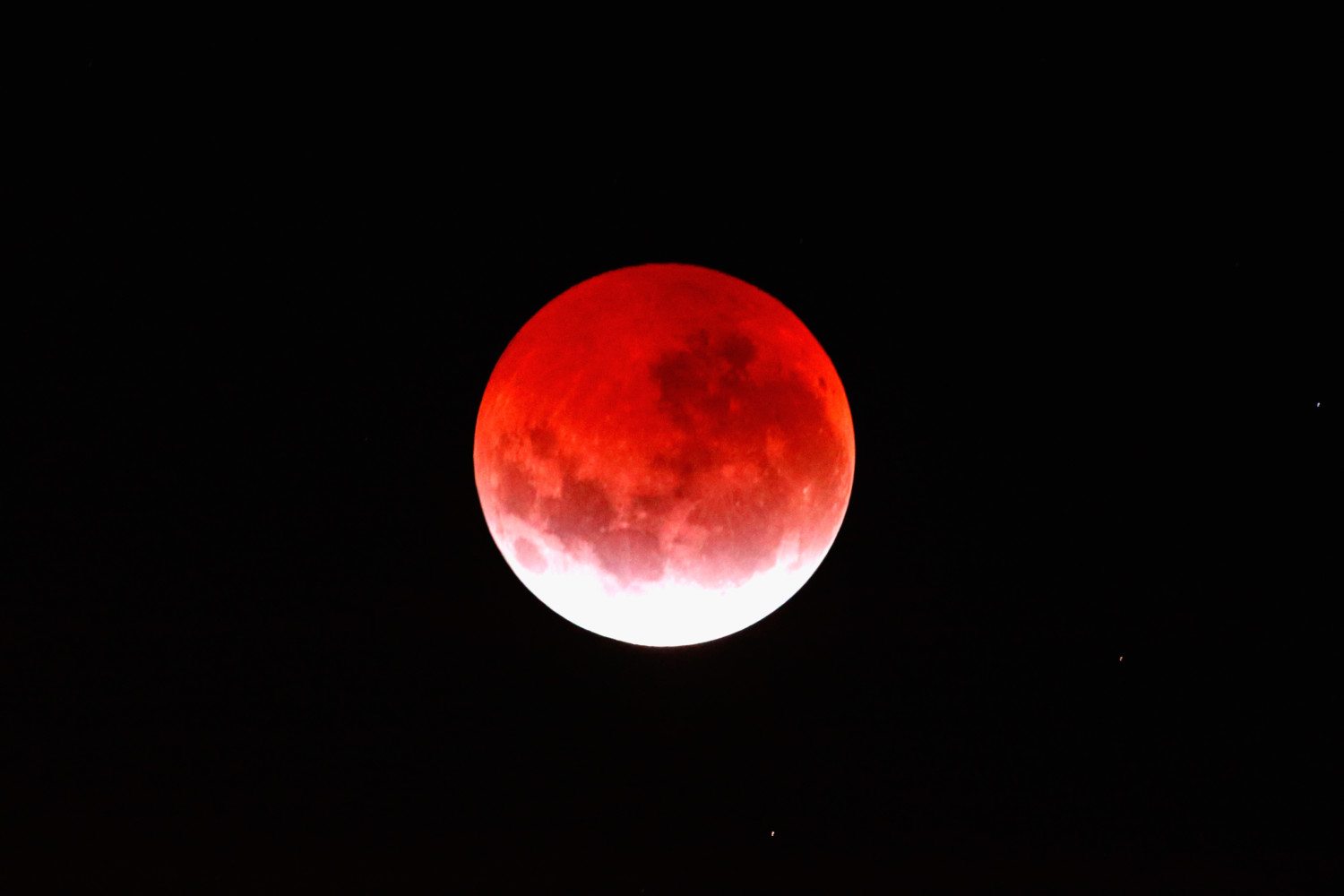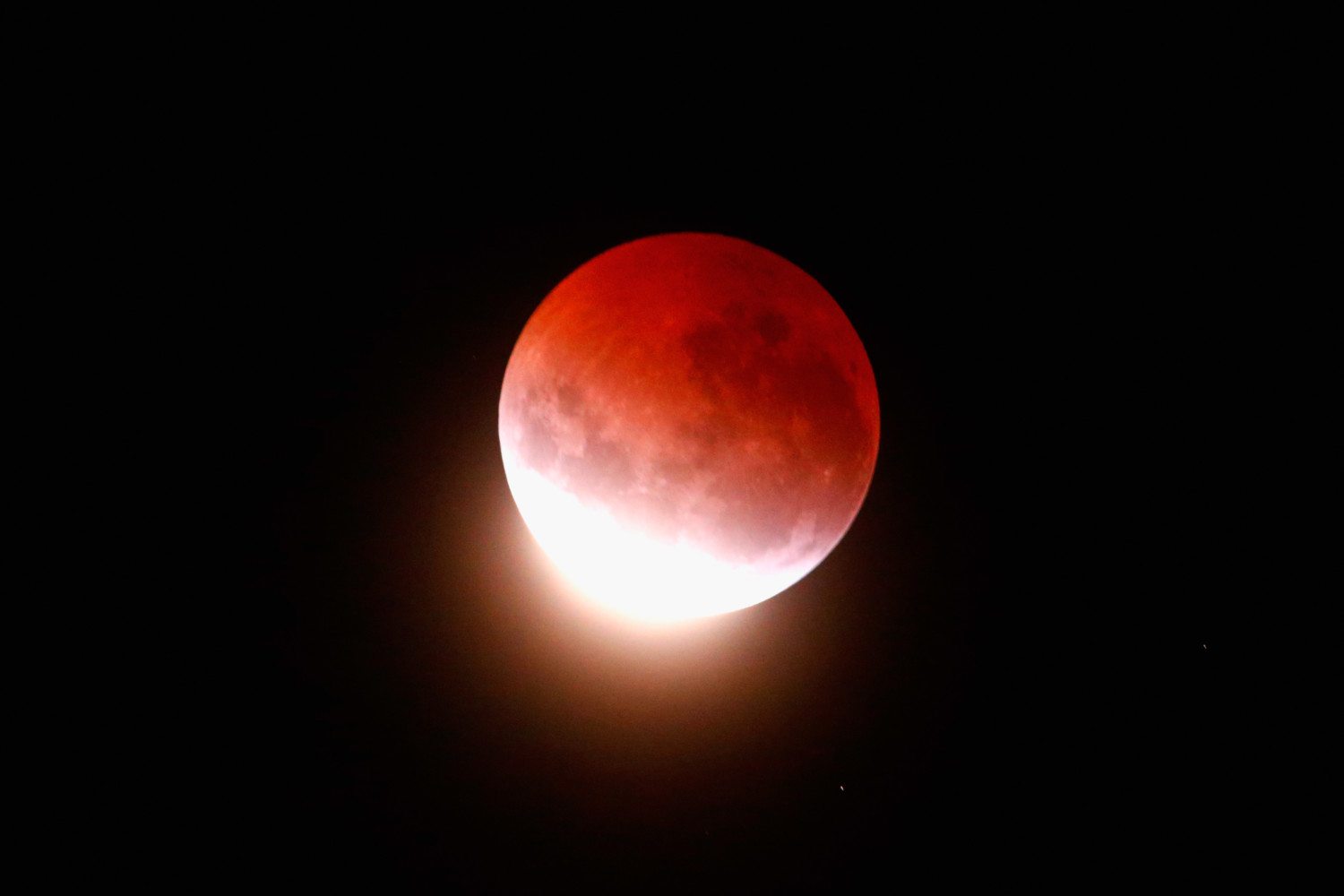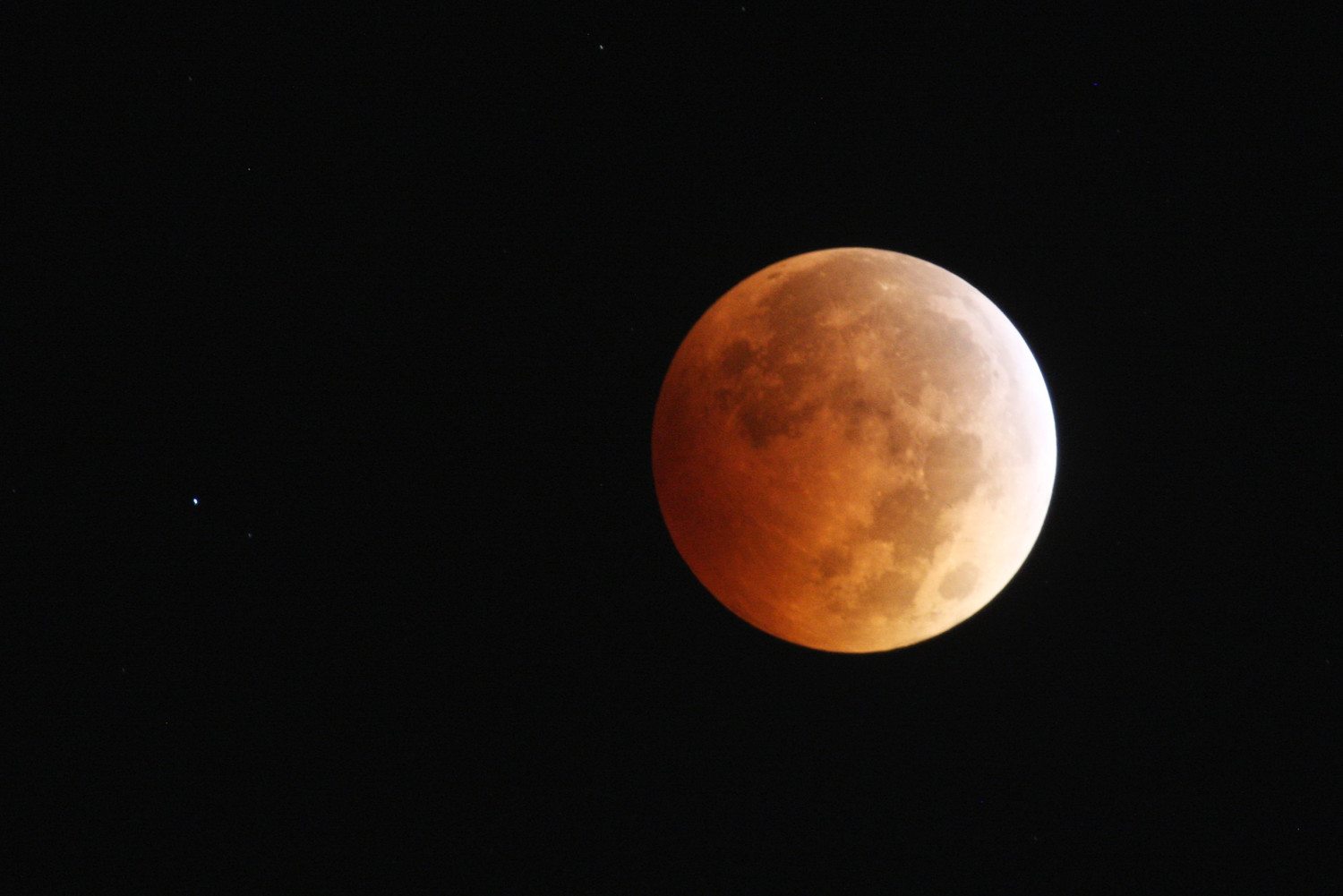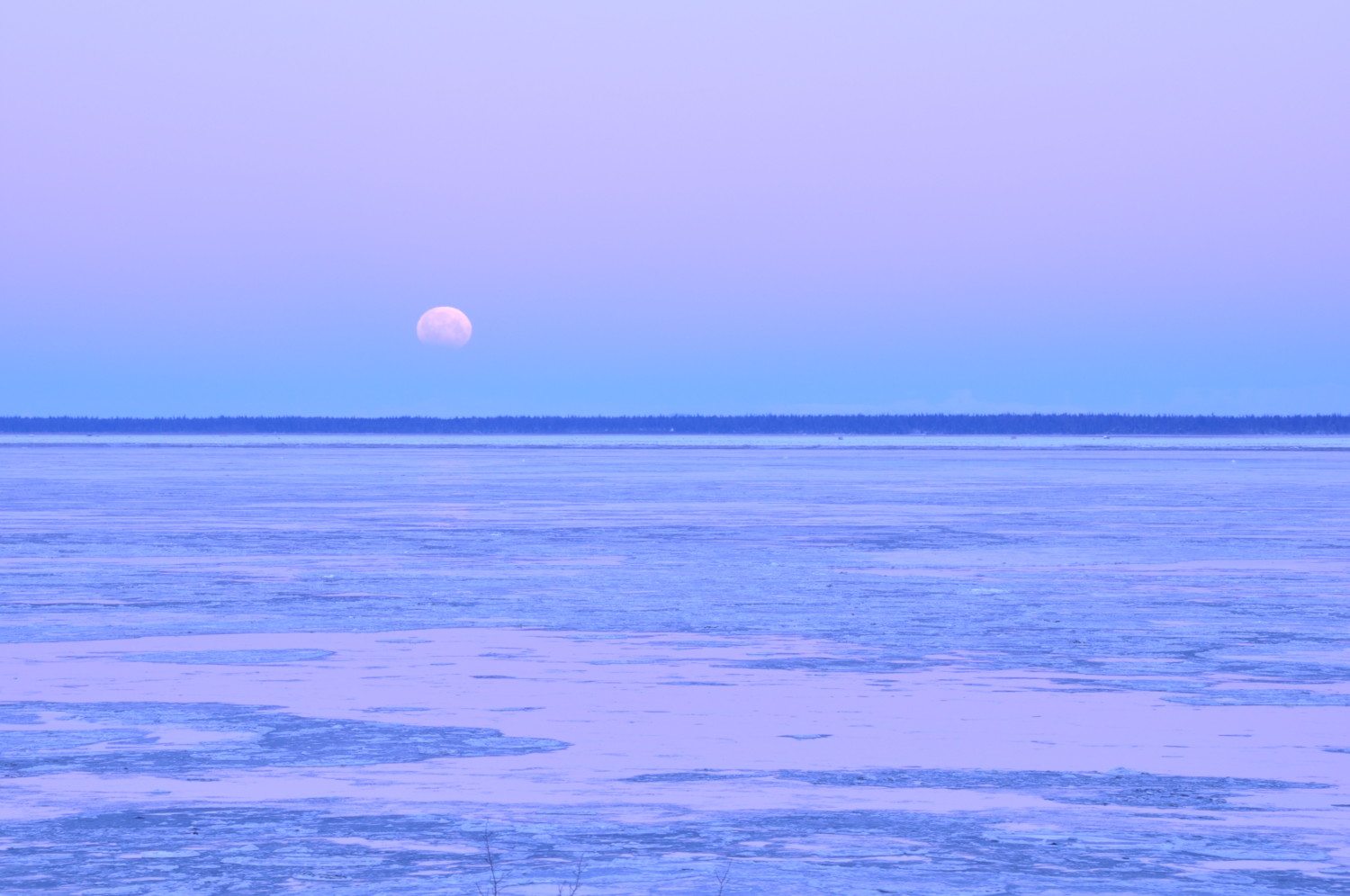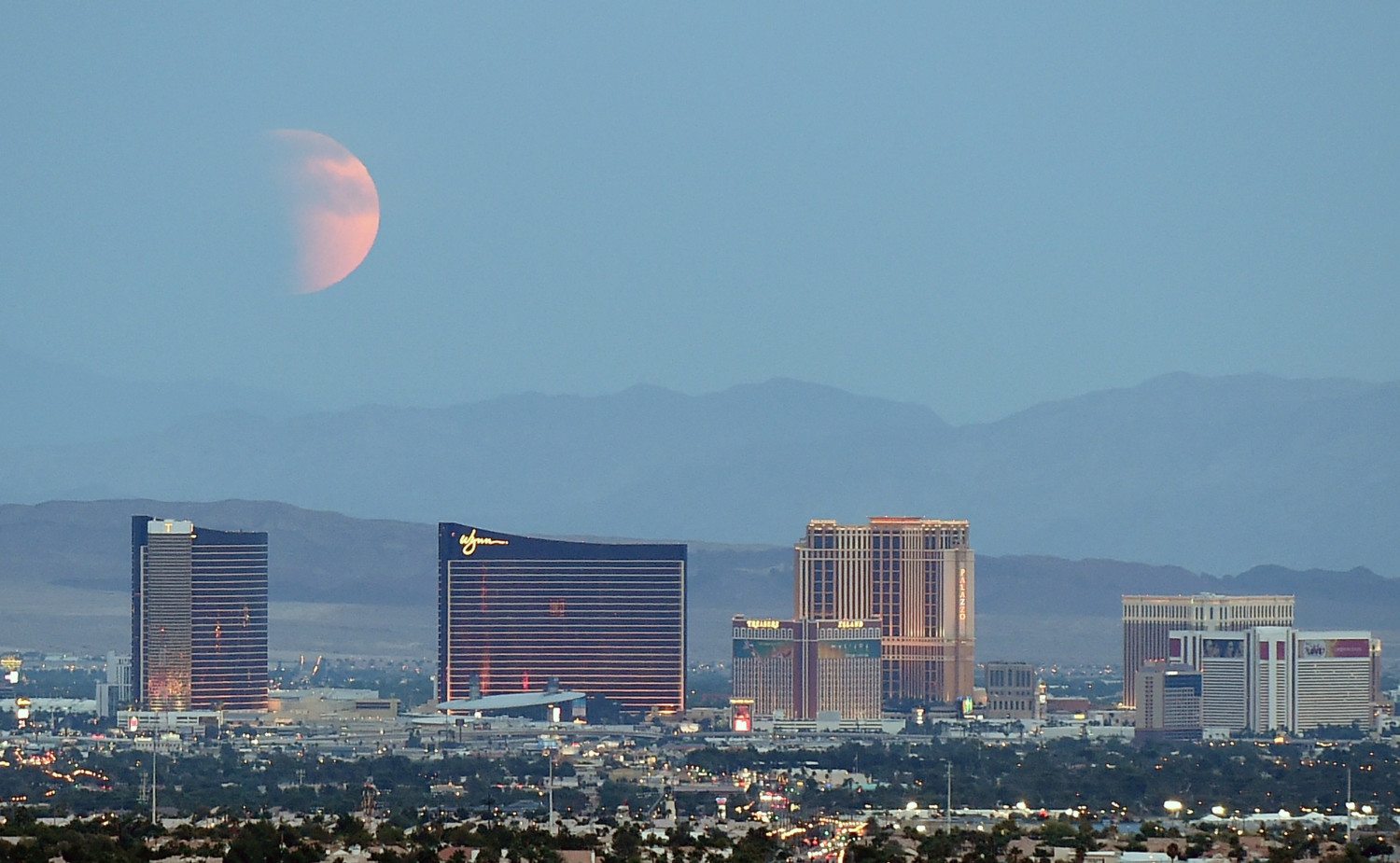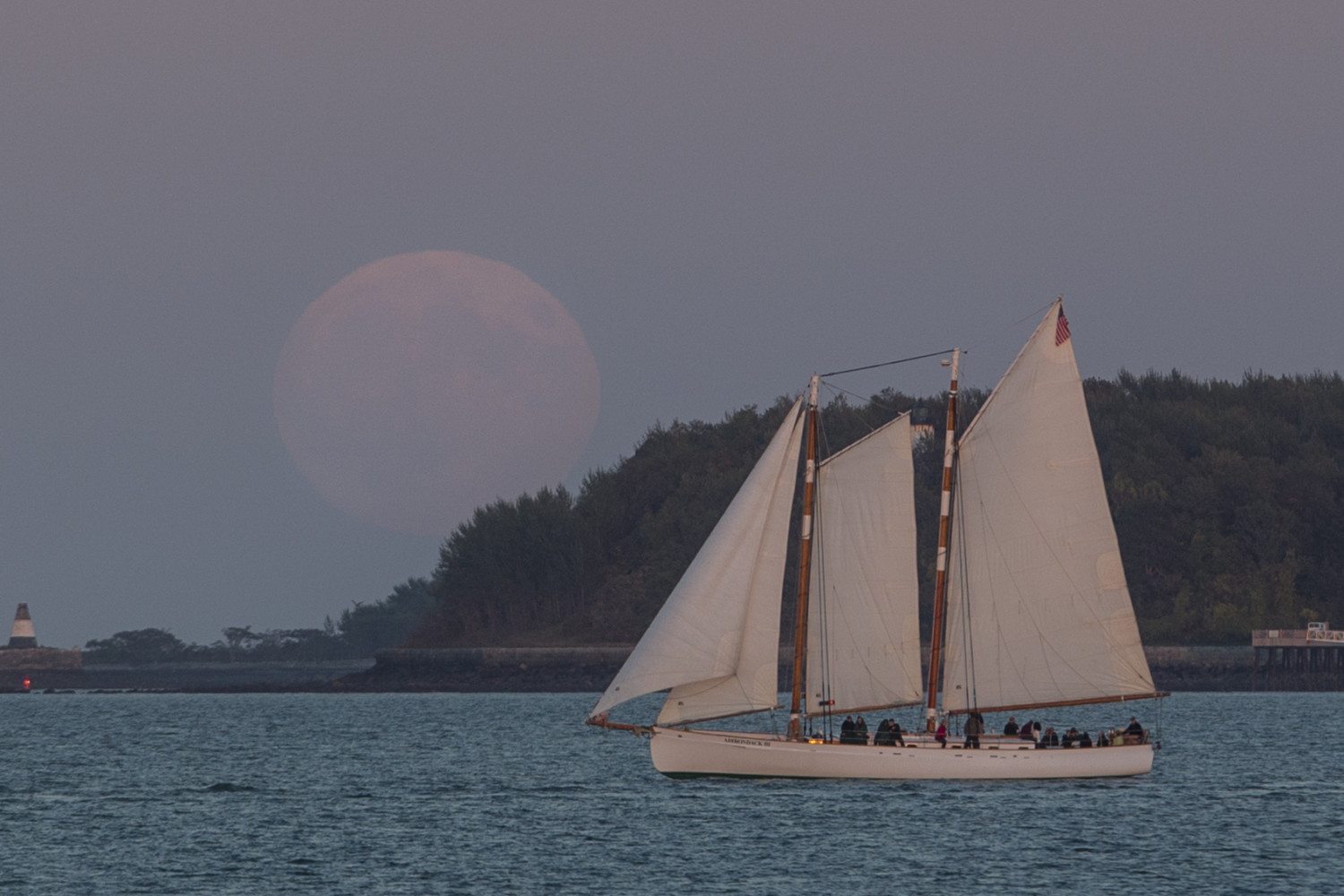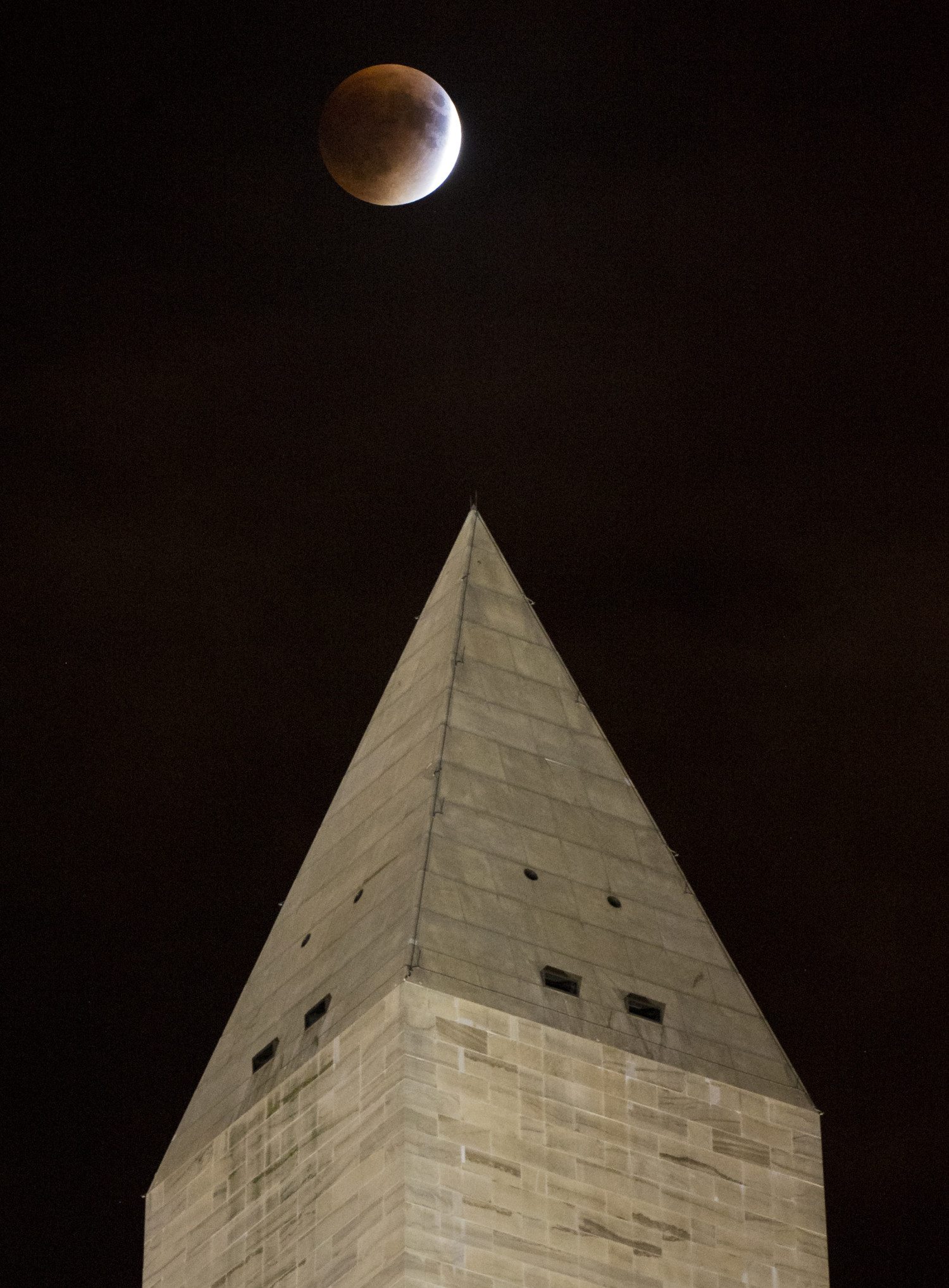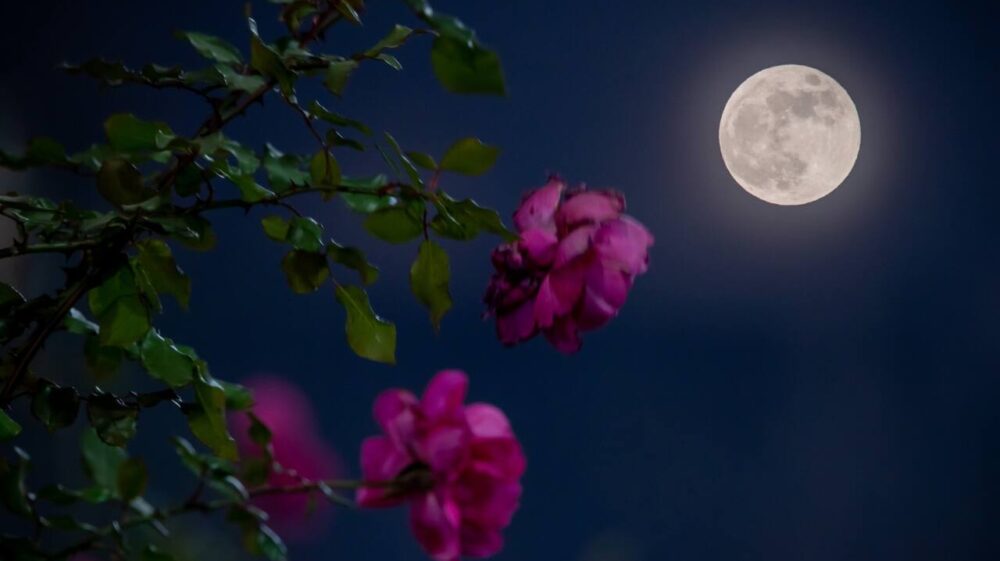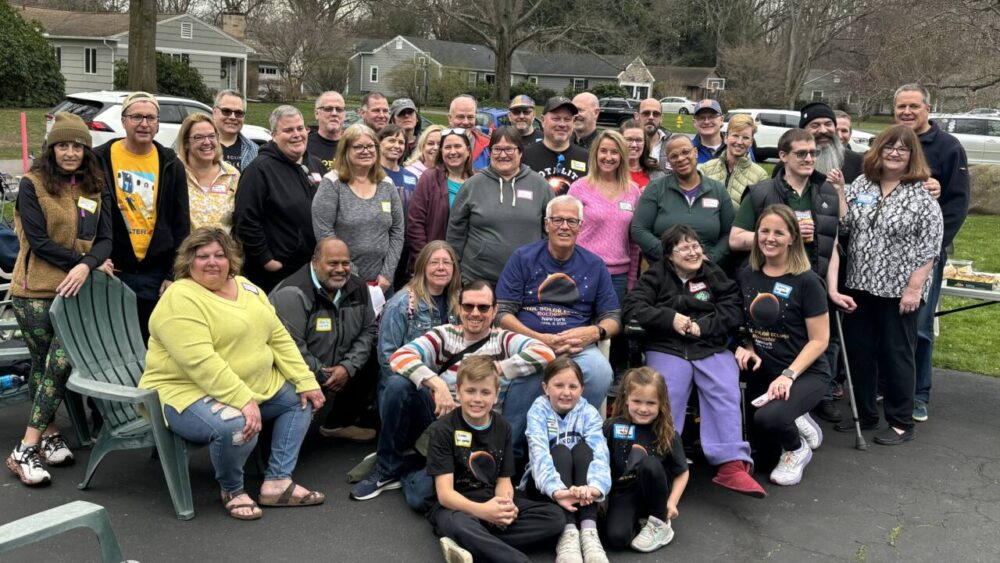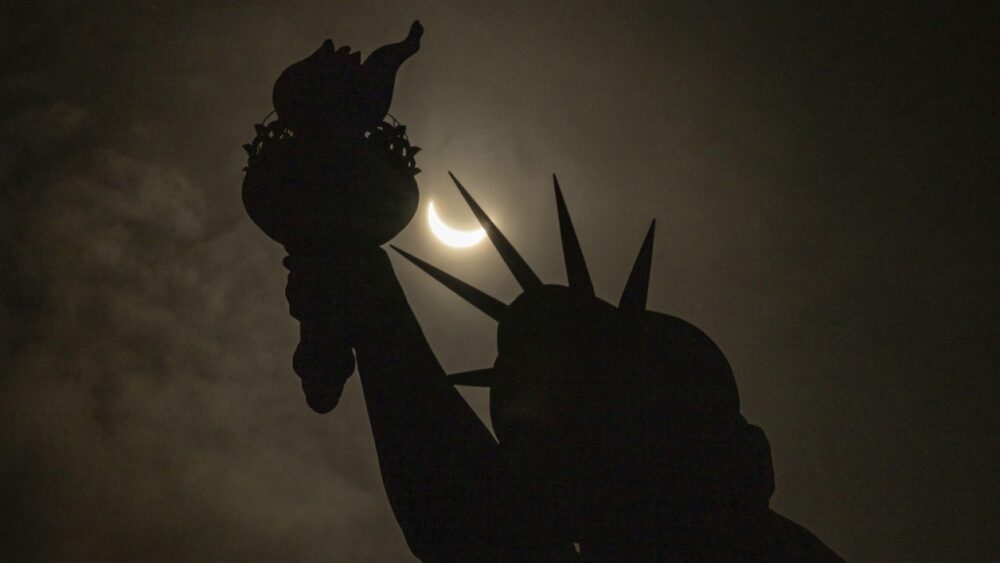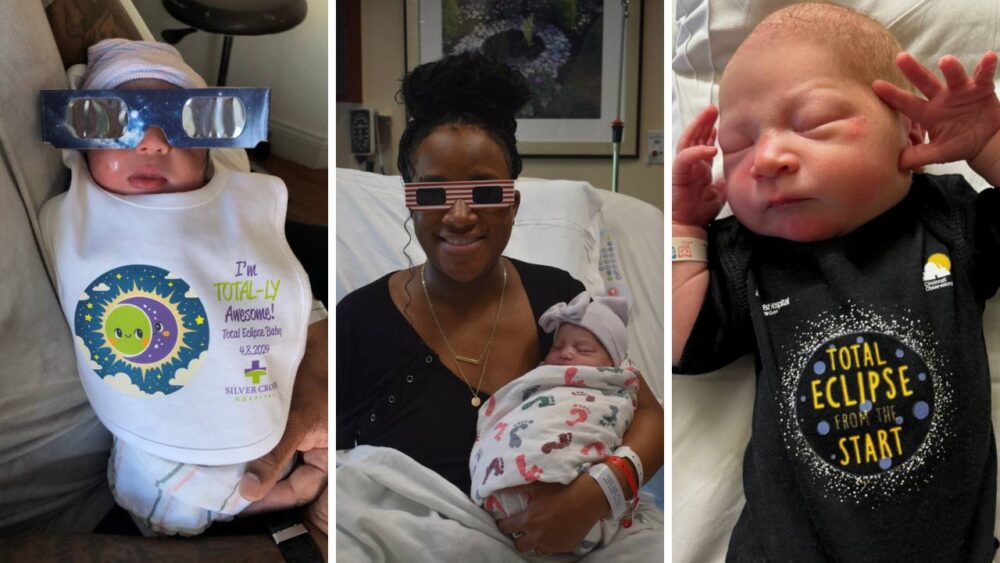Get Ready To See The First Blue Moon Eclipse In 150 Years
From a supermoon to Harvest and Beaver moons to the solar eclipse, 2017 was a pretty good year for sky watchers. But 2018 is starting out even stronger, as the biggest full moon of the year happened on New Year’s Day. Soon, we’ll all be treated to something even better—the first Super Blue Moon Eclipse in 150 years.
A blue moon is when two full moons happen in the same month (or when four moons happen in one season, where there’d usually be just three—read Space.com’s explanation for how the blue moon term came to be) and actually has nothing to do with the moon’s color. Lunar eclipses occur when the moon passes into Earth’s shadow, and supermoons occur when the full moon happens at the same time the moon is closest to Earth in its orbit.
Three Major Celestial Events Happening At Once
On Jan. 31, all three of these celestial events will happen at the same time.
While the blue moon and the lunar eclipse will occur on Jan. 31, the supermoon will actually take place on Jan. 30. But even NASA is calling the event a supermoon, so we’ll go with it!
Check out this amazing footage of a stunning supermoon from 2016 – we’ve never seen it this close before!
The Moon Will Actually Look Red—Not Blue
Oh, and just because we know you’re wondering: the lunar eclipse will actually make the moon look red—not blue.
As mentioned earlier, the term blue moon applies to the number of full moons in a certain period rather than its color. Instead, a lunar eclipse will actually end up giving the moon a red or orange hue.
Here’s how NASA explains it:
“Sunlight is an energy that travels in waves. A wavelength is the distance between the tops of the waves. Sunlight has a range of wavelengths, some of which are visible colors. Each color has a different wavelength. Violet has the shortest wavelength and red has the longest. When all of the waves are together, such as when they travel in space, the light is white. When white light passes through an atmosphere, it can be broken up into visible colors and other wavelengths.
During a total lunar eclipse, white sunlight hitting the atmosphere on the sides of the Earth gets absorbed and then radiated out (scattered). Blue-colored light is most affected. That is, the atmosphere filters out (scatters away) most of the blue-colored light. What’s left over is the orange- and red-colored light. This red-colored light passes through our atmosphere without getting absorbed and scattered, before the atmosphere bends it (refracts it) back out, projecting indirect, reddish light onto the Moon.”
Fascinating, right? This reddish hue is also why a lunar eclipse is sometimes referred to a blood moon.
How To Catch The Super Blue Moon Eclipse
Unfortunately, just looking at the sky on Jan. 31 will not guarantee a view of the lunar eclipse. The easternmost part of the U.S. will be able to see the end of the eclipse at around 6:48 a.m. EST, but the event will most easily be seen on the western side of the country, according to Space.com.
If you’re in the Chicago area, you will be able to catch a glimpse and see the blood-red color of the moon as it enters totality at 6:16 a.m. In California? You’ll get a good view of totality, with the total phase starting at 4:51 a.m. and ending at 6:07 a.m. Anyone who lives outside of the 48 contiguous states is in luck, as Alaska and Hawaii will have the best views in the U.S.
You can take a look at NASA’s lunar eclipse chart by clicking here, which will show you where you’ll be able to find the best view (or whether you’ll miss it completely). Of course, thanks to it being 2018 and all, you can also watch the event while inside your house via a livestream from The Virtual Telescope Project, or streaming service Slooh.
Get Your Cameras Ready
A supermoon eclipse in September 2015 gave photographers the chance to capture some pretty epic photographs, like this one of the Las Vegas skyline…
… this one in California…
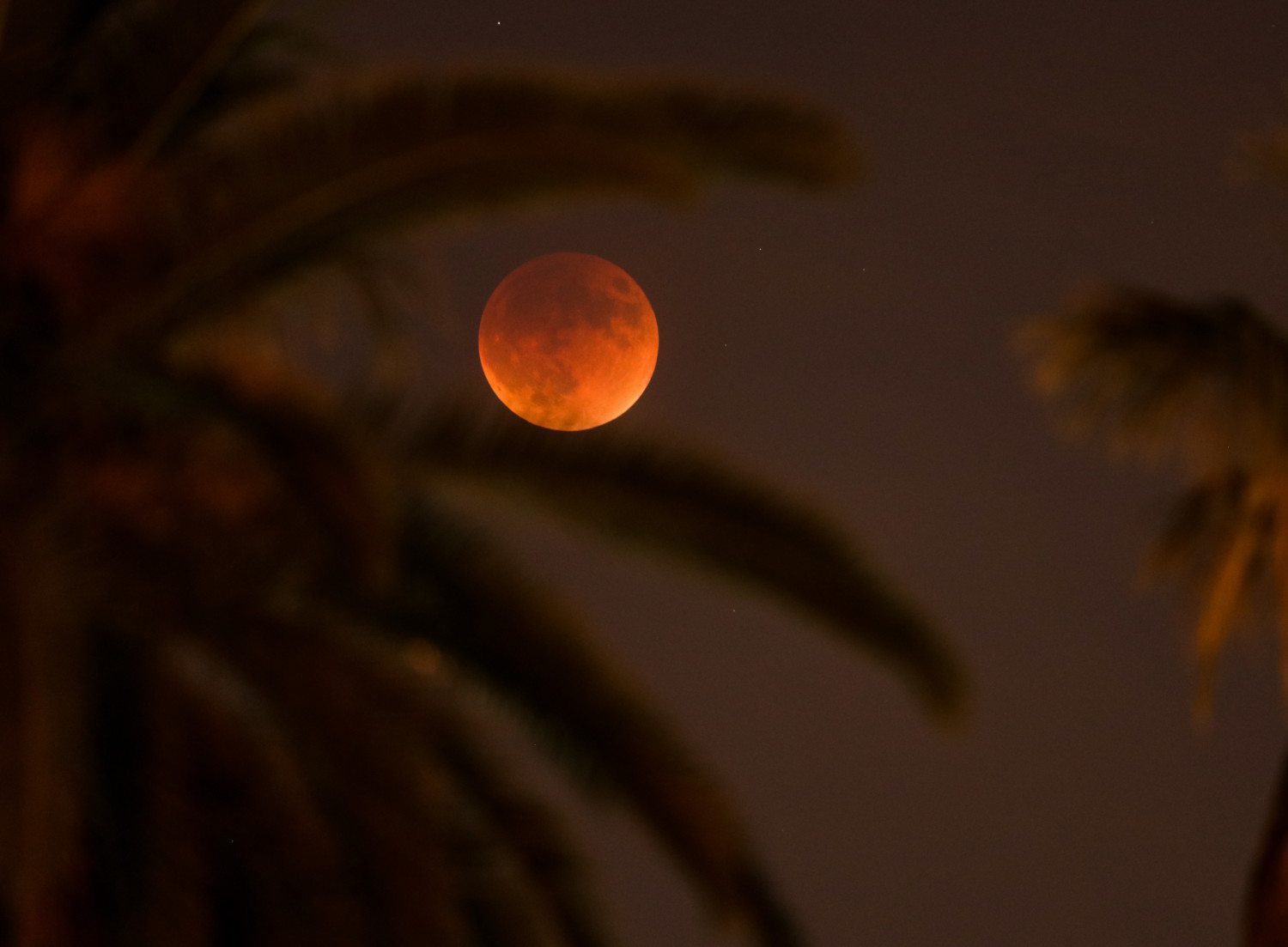
… this stunning shot in Boston…
…and this one above the Washington Monument in Washington, D.C.
Although 1866 was the last time this incredible event happened, you won’t have to wait too long if you miss it this year — there will be another one Dec. 31, 2028.


